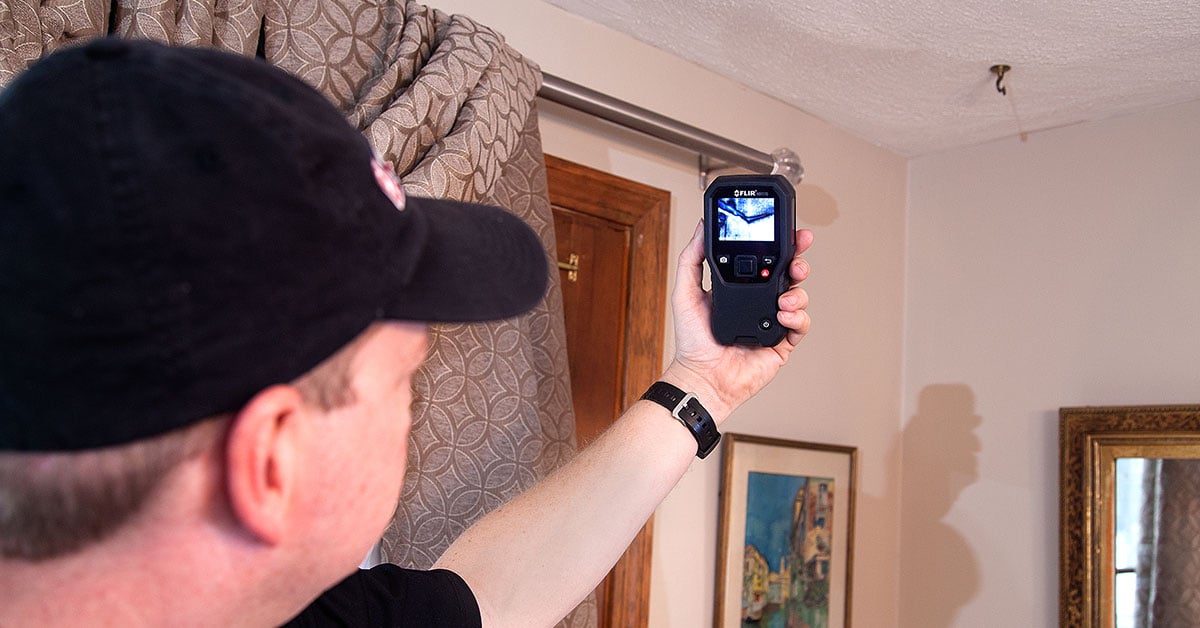6 Ways to Find Concealed Water Leaks in Your Home
6 Ways to Find Concealed Water Leaks in Your Home
Blog Article
The article below about Hacks to detect leaks is seriously attention-grabbing. Don't miss out on it.

Early detection of leaking water lines can mitigate a possible catastrophe. Some small water leakages might not be noticeable.
1. Analyze the Water Meter
Every home has a water meter. Examining it is a proven manner in which helps you discover leaks. For starters, shut off all the water sources. Make sure no person will certainly flush, utilize the faucet, shower, run the cleaning equipment or dish washer. From there, most likely to the meter and also watch if it will certainly transform. Since no one is utilizing it, there should be no movements. That shows a fast-moving leakage if it relocates. Similarly, if you identify no changes, wait a hr or more as well as inspect back once again. This suggests you might have a sluggish leak that could also be below ground.
2. Check Water Consumption
Assess your water expenses and also track your water consumption. As the one paying it, you need to see if there are any inconsistencies. If you detect sudden changes, regardless of your consumption being the same, it indicates that you have leaks in your plumbing system. Keep in mind, your water expense need to drop under the same variety every month. A sudden spike in your costs indicates a fast-moving leak.
A constant rise every month, even with the same behaviors, reveals you have a sluggish leak that's also gradually intensifying. Call a plumber to extensively check your residential or commercial property, particularly if you feel a warm area on your flooring with piping beneath.
3. Do a Food Coloring Examination
When it comes to water intake, 30% comes from commodes. If the color somehow infiltrates your bowl during that time without flushing, there's a leak in between the storage tank and also bowl.
4. Asses Outside Lines
Do not neglect to examine your outdoor water lines too. Test spigots by connecting a garden pipe. Must water permeate out of the link, you have a loosened rubber gasket. Replace this as well as make sure all links are limited. If you have actually obtained an automatic sprinkler, it will certainly aid get it properly checked out and maintained annually. One small leak can squander tons of water and also spike your water expense.
5. Analyze the situation and also inspect
House owners ought to make it a practice to check under the sink counters as well as even inside closets for any kind of bad odor or mold and mildew growth. These two red flags show a leak so prompt focus is needed. Doing regular evaluations, even bi-annually, can conserve you from a major issue.
Check for discolorations and also deteriorating as most home appliances and pipes have a life expectations. If you think leaking water lines in your plumbing system, do not wait for it to rise.
Early detection of dripping water lines can alleviate a possible calamity. Some tiny water leaks may not be visible. Inspecting it is a proven means that aids you discover leaks. One tiny leak can squander loads of water and spike your water expense.
If you believe dripping water lines in your plumbing system, do not wait for it to rise.
How to Know If Your Home Has a Hidden Leak
Water Meter Reveals Inexplicable Water Usage
If you’d like to test whether or not there’s a leak somewhere in your home, you can do this using your water meter. Here is how to conduct the test:
Don’t use any water in your home for at least 30 minutes; this also means not turning on faucets or water-using appliances.
Go outside, and check your water meter for activity.
If your water meter shows that there was activity, even though no one was using any water, this proves that there is a leak in your home.Visible Mold or Mildew Growth
Leaks behind walls create moist, dark environments that allow mold and mildew to grow and thrive. Eventually, you might see mold growth forming on the wall closest to a hidden leak.
If mold is growing in an area that receives a high amount of moisture, such as a bathroom, it may simply be an indication that better ventilation is needed. However, if you see mold growth on a wall or the ceiling in an area where you would not expect, you probably have a hidden leak.
Musty, Mildew Odor
Sometimes you might not be able to see the mold or mildew that is growing as a result of a leak. However, the smell can give the problem away just as easily. If you catch a whiff of something musty, there’s a good chance that old water is collecting somewhere in your home that you can’t see.
Stained/Warped Walls, Ceilings, or Floors
When your home soaks up water, a variety of red flags can become visible, including ceiling stains, bubbling drywall, warped walls, and sagging floors. While these issues can be caused by excess humidity, they can also be signs that a pipe or plumbing connection has started leaking behind your walls.
Inexplicably High Water Bill
After a while, you get a general sense for what your water bill should be. If you own a pool or sprinkler system, your bill will tend to be higher during summer. However, if you receive a water bill that seems especially high, and you can’t figure out what caused it, then you may have a hidden leak somewhere that’s increasing your bill.
https://www.plumbingjoint.com/blog/2019/july/how-to-know-if-your-home-has-a-hidden-leak/
.jpg)
I recently found that article on Detecting hidden plumbing leaks when doing a lookup on the internet. Enjoyed reading our content? Please share it. Let others locate it. Thanks so much for going through it.
Report this page